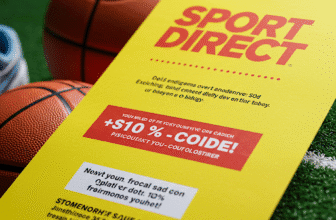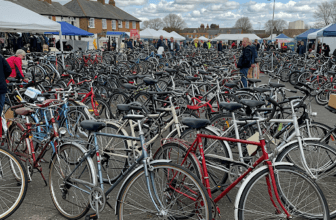
The Ultimate UK Runner’s Guide to Conquering the Sales: Bag a Bargain, Not an Injury
There’s a certain thrill to it, isn’t there? The email lands in your inbox, the social media ad pops up, or you spot the big red banner in a shop window: “RUNNING SALE ON NOW!” For a moment, your heart-rate variability probably mirrors the final kilometre of a tough 10k. It’s a call to action more potent than a pre-race espresso. Whether you’re a seasoned marathoner chasing a new PB or someone who’s just discovered the joy of a weekend Parkrun, the lure of discounted kit is powerful. But navigating a running sale can be as tricky as a technical trail with tired legs. It’s a field littered with potential missteps – the wrong shoes, the ill-fitting shorts, the gadget you’ll never use.
Fear not. This is your comprehensive guide to strategically navigating the world of running sales in the UK. We’re not just talking about saving a few quid; we’re talking about making smart, informed investments in your running journey that will pay dividends in comfort, performance, and injury prevention for miles to come. So, lace up your most comfortable reading shoes, and let’s dive in.
Timing is Everything: When to Pounce on the Best Deals
Like timing your kick for the finish line, knowing *when* to shop is half the battle. Retailers operate on predictable cycles, and understanding them can put you in pole position for the best bargains.

- Post-Marathon Season (Late April/May & October): The big city marathons, especially London in April and others in the autumn, create a huge surge in demand for running gear. In the weeks that follow, retailers often look to clear out the stock they brought in. This is a prime time to find deals on everything from high-end racing shoes to nutrition and accessories.
- End of Season (February/March & August/September): This is when brands release their new season’s colours and updated models. Retailers need to make space. This is your golden opportunity to snag last season’s apparel and footwear at a significant discount. A running jacket from last year is still a perfectly good running jacket, and often the updates to shoe models are minor tweaks rather than revolutionary overhauls.
- Black Friday & Cyber Monday (November): An obvious one, but not to be overlooked. This is a fantastic time for deals on running tech in particular. GPS watches, headphones, and other electronics often see their steepest price drops during this period. Be prepared for a digital scrum, so have your wish list ready in advance.
- January Sales: The classic. Everyone’s making New Year’s resolutions to get fit, and retailers are ready. They’re also clearing out Christmas stock. While it’s a busy time, the sheer volume of offers means there are always gems to be found.
The Crown Jewel: Finding the Perfect Running Shoes on Sale
Let’s be honest, this is the main event. A good pair of running shoes is the single most important piece of kit you’ll ever buy. Getting it right can feel like running on clouds; getting it wrong can lead to a world of pain and injury. A sale is the perfect time to get a brilliant shoe for a brilliant price, but it’s also where the costliest mistakes are made.
Step 1: Get Your Gait Analysed (Before the Sale!)
Do not skip this step. Seriously. Walking into a sale and just picking the shoe that looks the nicest or has the biggest discount is a recipe for disaster. Most specialist running shops in the UK (like Runners Need or Up & Running) offer free video gait analysis. They’ll film you running on a treadmill for a few seconds to see how your foot lands.
This will determine whether you are:
- A Neutral Runner: Your foot rolls inwards a healthy amount to absorb shock. You have the widest choice of shoes.
- An Overpronator: Your foot rolls inwards excessively. You’ll likely need a ‘stability’ or ‘support’ shoe with features to guide your foot into a more neutral alignment.
- A Supinator (or Underpronator): Your foot rolls outwards. This is less common, but you’ll need a neutral shoe with excellent cushioning to help with shock absorption.
Once you know your gait type and have a few recommended models from the experts, *then* you can hit the sales with confidence, searching for those specific shoes or their equivalents from other brands.
Step 2: Decode the Tech Jargon
The world of running shoes is filled with confusing terms. Here’s a quick rundown of what actually matters:
- Midsole Foam: This is the engine of the shoe. Standard EVA foam is reliable but can feel a bit firm. Modern ‘super foams’ like Nike’s ZoomX, Adidas’s Lightstrike Pro, or Saucony’s PWRRUN PB are much lighter, bouncier, and more energy-efficient. Sale season can be a great time to try a shoe with premium foam that might otherwise be out of your budget.
- Heel-to-Toe Drop: This is the height difference between the heel and the forefoot, measured in millimetres. Traditional shoes are around 10-12mm. More ‘natural’ or minimalist shoes are lower (0-6mm), which can promote a midfoot strike. There’s no right or wrong answer, but making a drastic change in drop can strain your calves and Achilles tendon, so be cautious.
- Stack Height: This refers to the total amount of cushioning under your foot. ‘Maximalist’ shoes (like many from Hoka) have a very high stack height for ultimate comfort on long runs. ‘Minimalist’ shoes have very little. Most daily trainers sit somewhere in between.
- Carbon Plates: The new kid on the block. These rigid plates, embedded in the foam, work like a lever to propel you forward. They are primarily designed for racing and can feel unstable for slower, everyday runs. Don’t be tempted by a discounted carbon-plated racer for your daily plod around the park unless you know what you’re getting into.
Step 3: The “Last Year’s Model” Dilemma
You’ll often see last year’s version of a popular shoe (e.g., the Brooks Ghost 14 when the 15 is out) heavily discounted. Is it a bargain? 90% of the time, yes! Often, the update from one year to the next is a minor change to the upper material or a new colourway. Read reviews comparing the two versions. If the core technology and fit haven’t changed much, you can save yourself £40-£50 for a virtually identical experience. This is one of the smartest ways to shop the sales.
Beyond the Shoes: Assembling Your Kit for Less
While shoes are the priority, the right apparel and accessories transform a run from an ordeal into an enjoyable experience. The key principle? Ditch the cotton.
Technical Apparel: Your Second Skin
Cotton is a runner’s worst enemy. It absorbs sweat, gets heavy, chafes, and leaves you cold and clammy. Look for technical fabrics – polyester, nylon, merino wool blends – that are designed to be moisture-wicking (pulling sweat away from your skin) and breathable.
- Tops and Vests: A simple technical t-shirt is a must. For winter, a long-sleeved base layer, perhaps made from merino wool for its natural warmth and odour resistance, is a game-changer.
- Shorts and Tights: Look for practical features. Does it have a secure zip pocket for your key and a gel? Are the seams flat-locked to prevent chafing? For longer distances, compression tights can help with muscle support and recovery.
- The Unsung Hero: Running Socks: Never underestimate the power of a good pair of running socks. A cheap, multi-pack of cotton trainer socks will give you blisters. Invest in proper running socks with features like a seamless toe, arch support, and specific wicking materials. They are worth every penny, and sales are the perfect time to stock up.
- Jackets: A lightweight, windproof jacket is essential for UK running. It will protect you from the chill on most days. A fully waterproof jacket (look for Gore-Tex or similar proprietary fabrics) is a bigger investment but invaluable if you’re determined to run through proper downpours.
Gadgets and Accessories on a Budget
The tech world moves fast, which means last year’s top-of-the-line GPS watch is often this year’s mid-range bargain.
- GPS Watches: Don’t get blinded by a million features. For most runners, the core needs are accurate GPS for distance and pace, a reliable heart rate monitor, and good battery life. Models from Garmin, Polar, or Coros that are a year or two old will offer all of this for a fraction of their original price.
- Headphones: Safety first. Bone conduction headphones (like those from Shokz) are fantastic as they leave your ears open to hear traffic and your surroundings. They can be pricey, so a sale is a great time to grab a pair.
- Hydration Vests and Belts: If you’re starting to push your distances beyond 10k, carrying water becomes essential. A sale is a good opportunity to pick up a hydration vest or belt you might not have wanted to pay full price for.
Your Savvy Sale-Shopping Strategy
Okay, you know when to shop and what to look for. Now, how do you execute the plan like a pro?
- Make a List (and Check it Twice): Go through your current running wardrobe. What’s worn out? What are the genuine gaps? Do you need a new waterproof jacket for winter training, or are you just tempted by the shiny one? A list keeps you focused and prevents impulse buys.
- Know Your Size: Sizing can vary wildly between brands. If you can, try things on in a physical shop before buying online. If not, check the brand’s specific size guides and read reviews to see if items run large or small.
- Check the Returns Policy: This is non-negotiable, especially for shoes. You need to be able to try them on at home (on a carpet, don’t wear them outside!) and send them back for a full refund if they’re not right. Most reputable online retailers offer free and easy returns.
- Be Wary of “Fake” Discounts: Some less scrupulous sites might inflate the ‘original’ price to make a discount look bigger than it is. Do a quick search for the product on other websites to get a sense of its true retail price.
As a little thank you for reading our guide, we wanted to share a little something extra. Many of our partner brands appreciate savvy runners, and for a limited time, you can try the code RUNUK15 for an extra 15% off sale items on participating websites. It’s the perfect way to make a great deal even better!
Conclusion: The Smartest Mile is the One Well-Equipped
A running sale isn’t just about saving money; it’s an opportunity to upgrade your comfort, boost your performance, and protect yourself from injury without breaking the bank. By doing your homework, understanding your needs, and approaching the sale with a clear strategy, you can cut through the noise and emerge with high-quality kit that will serve you well for hundreds of miles.
The best investment you can ever make is in your own health and happiness. Running gives us that in spades. And getting the gear that makes it possible for a little bit less? Well, that’s just the runner’s high before you’ve even stepped out the door.







